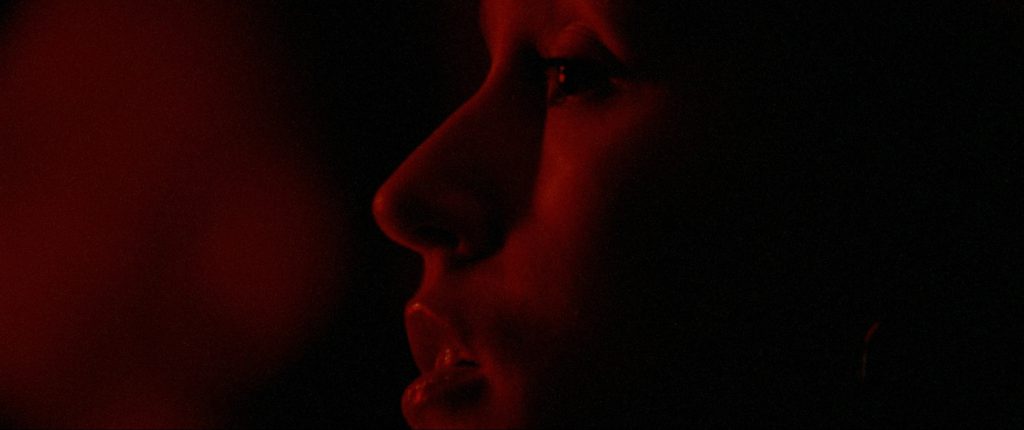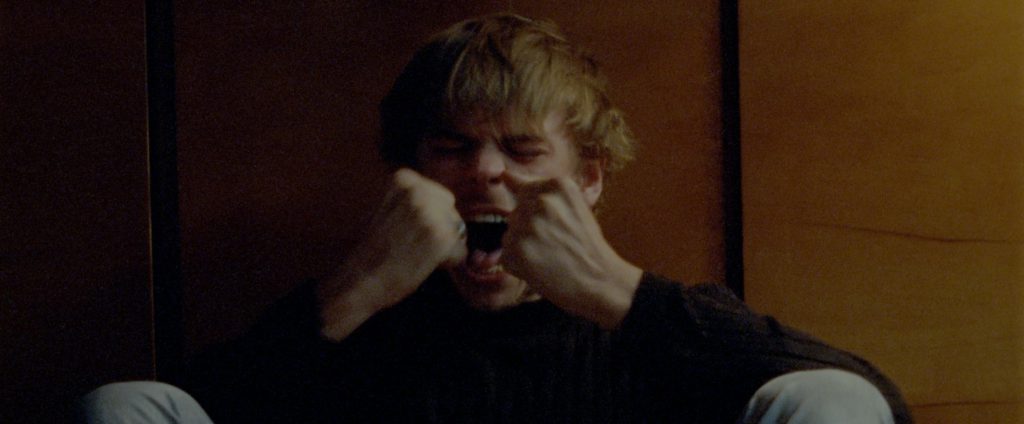Filmmaker Dawid Bodzak has recently graduated from the Polish National Film School in Lodz and he has more reasons to celebrate as his film KROKODYL was selected for the 2023 Cannes Court Metrage.
We caught up with the filmmaker to talk about his process, lighting a neo-Gialo that was shot on film stock, his unique approach to sound, and his love of watching films in a cinema.
Professional subscribers can watch KROKODYL, as well as Dawid’s previous short TREMORS on T-Port.
Hi Dawid! Tell us about yourself
I was born in 1989 in Warsaw and moved to Lodz to study directing in Polish National Film School in Lodz. I have made fiction and documentary short films during my time at the university. I am a director and writer of a short fiction film TREMORS (Grand Prix Clermont Ferrand 2018) and a short fiction film KROKODYL which had its world premiere at Semaine de la Critique Cannes 2023.
My filmmaking beginnings were aggressive inline videos: Making rollerblading videos, skate videos or any other street sport is a great way to get used to the camera, learning how to edit and understand the core of filmmaking. These sports are more like an art form or a way of expression, so making a good video was always more important than taking part in competitions.
In my short films that I’ve made during studies I always tried to be close to something that I knew, something that I understood or I wanted to understand better, but also to experiment with the form of a film, to try to push my own boundaries. Now I am working on a first feature project which is a religious thriller.

What is the title of your film that made the Cannes selection? What is it about?
KROKODYL is my diploma film, produced by Polish National Film School in Lodz. It is a short ‘neo-giallo’ film about a need to fulfil hidden desires, which bursts the characters’ world from the inside.
It is not a Giallo film or a way of refreshing a genre, but we use some motives or cliches from the genre to get into the protagonist’s internal world and play with the viewer’s expectations.
It is more a film about emotions and getting inside of the characters’ world than classic storytelling, so it is harder to write a classic synopsis.

What first sparked the idea to make this film?
The idea of KROKODYL came to me during the pandemic lock down. Me and my girlfriend were closed for months in an apartment, both very frustrated and unfulfilled at the time. I needed to exorcise that energy out. Unfulfillment is a growing monster that will get out in the most unexpected time and form. “Krokodyl” means “crocodile” in English and the crocodile is a predator – hidden and dangerous – but the word “krokodyl” in the Polish language sounds also a bit ridiculous and this was the exact energy that I was looking for – something dangerous, hidden and ridiculous at the same time.
Where were you when you found out about the Cannes selection and how did you react?
I was sitting in a library in Warsaw working on my next film screenplay when I received an email from Semaine de la Critique. It was a library so I needed to be quiet. Then I went out to call my friends who were working on the film, to share the news. It is a beautiful moment when you can tell all the people who you were working on a film with, that the film will have its premiere at Cannes Film Festival.

What were the biggest challenges you encountered during making your film? How do you view them now?
One of the biggest challenges was shooting it on film, mostly at night. We mixed 35mm and 16mm Kodak and 3D animations sequences. We wanted to have an intense and grainy image, but to shoot night scenes on film, without a lot of lighting, you need to be very creative.
The biggest challenge is that the set lighting for exposing a 16mm at night looks totally different from the result that you get on the screen. You need to imagine how the result would look like based on calculations and your own experience. It was my second short shoot on film and I love working like this. It creates a very special atmosphere on set. Every shoot is a celebration, especially when you don’t have a lot of film stock.
The second biggest challenge was that there were actors and non-professional actors playing together in the film. It was hard for both sides. Especially when You have a possibility to do just 2 or 3 takes for the scene, because of film stock. It was crazy.

Now that you’ve been through the production process, if you could go back in time and give your former self advice on the process, what would you say?
Try to believe more in yourself and your ideas.

Tell us three things you learned from the process of making your film
– Do films with the people who inspire you and who share the same passion for filmmaking.
– Be brave and try to cross your own boundaries.
– Making film is a magical ritual that engages all aspects of your life and the life of your partners and crew, so try to make this ritual beautiful and developing, even if it is hard and challenging most of the time.
Tell us about the sound choices in your film
The process of making music for this film was very special. I asked real musicians Teoniki and Kuba to play a real improvised concert on the movie set and also I asked them to play the characters of the musicians in the film. Then we had a few very long improvised live performances on set, during which we filmed a concert scene and also recorded the sound.
Then with the editor and the sound designer we cut the recorded music and used parts of it in sound design for the film. So most of the sound used in film are actually some small parts of the concert or the rehearsal between the takes. Not composed especially for this film, but at the same time unique and unrepeatable because it was an improvised performance. In this short film, music and sound design is very important.
Tell us about the visual choices
When we started to transform the movie script into a film, one of the most important ideas was to use use Giallo genre motives and clichés. Giallo’s most characteristic motive is aestheticizing violence with light, camera movement and all the possible cinematic tools. We used the same motives in KROKODYL, but the aim was to make these scenes feel grotesque and play with the viewers expectations.
Giallo is also a genre that expresses greatly subconsciousness and this was also something that we wanted to do in this film. We tried to use all the cinematic tools to get into the internal world of characters. In this film we have mixed a 16mm and 35mm to get a grainy and intense night images. That helped us to create a certain mood of the film. We also used a strong and stylized lighting which was one of the most important storytelling tools and the colours of the image shot on film are inimitable and very immersive. Colour of the light is an extension of the main character and his emotional states.
There was also a video game created especially for this film. It was created so that we could record real “game plays” and then use it in film. Games are also places where you can control the character, where you can safely experience things and situations that you can’t experience in real life. I found it a great metaphor of subconsciousness or a place “behind the border” that is crossed in the film.

How has the acceptance to Cannes made you look at your future career as a filmmaker?
It was a great honour to be part of the selection and to have the possibility to show our film there. We’ve had an opportunity to meet new people, see great premieres and celebrate our own premiere screening with the crew. I hope it will also help me to make a feature film in the future.
What are the biggest challenges for you, in promoting and distributing your film?
Taking part in a festival submission is expensive. Without money for a promotion of a short film it is hard to take part in every selection process you would like to take part in.
What is your advice to filmmakers who are behind you in the process of making and distributing their films? What do you wish someone had told you?
Believe in your project and try to show it to the audience. It sounds obvious, but I think there are a lot of super talented people hiding, thinking that they are not good enough. Try to show it in the cinema, in the way that it should be shown. If not at the festival, then try to organise a screening for friends. This is my second short film that I decided to show to the audience outside of the film school and for the second time I am super excited about what is going to happen.
What are you going to do after this and what are your dreams for the future of the film industry?
Now I will be working on my first feature film. I hope I will be able to make it and show it in cinemas. This is also my dream about the future of the industry, that there will be more opportunities to watch films in the cinema, rather than watching them online. Especially the films that are made to be watched in cinema, films that are using all the cinematic tools to tell the story or take you for an audiovisual ride.
If you are a film industry professional and would like access to the catalogue and more, find out here how to sign up.
Filmmaker? Upload your short film to T-Port before September 15 and it will automatically be considered for our T-Port Lighthouse Selections – a curated list of films picked by leading industry programmers.
Back to T-Port Blog
